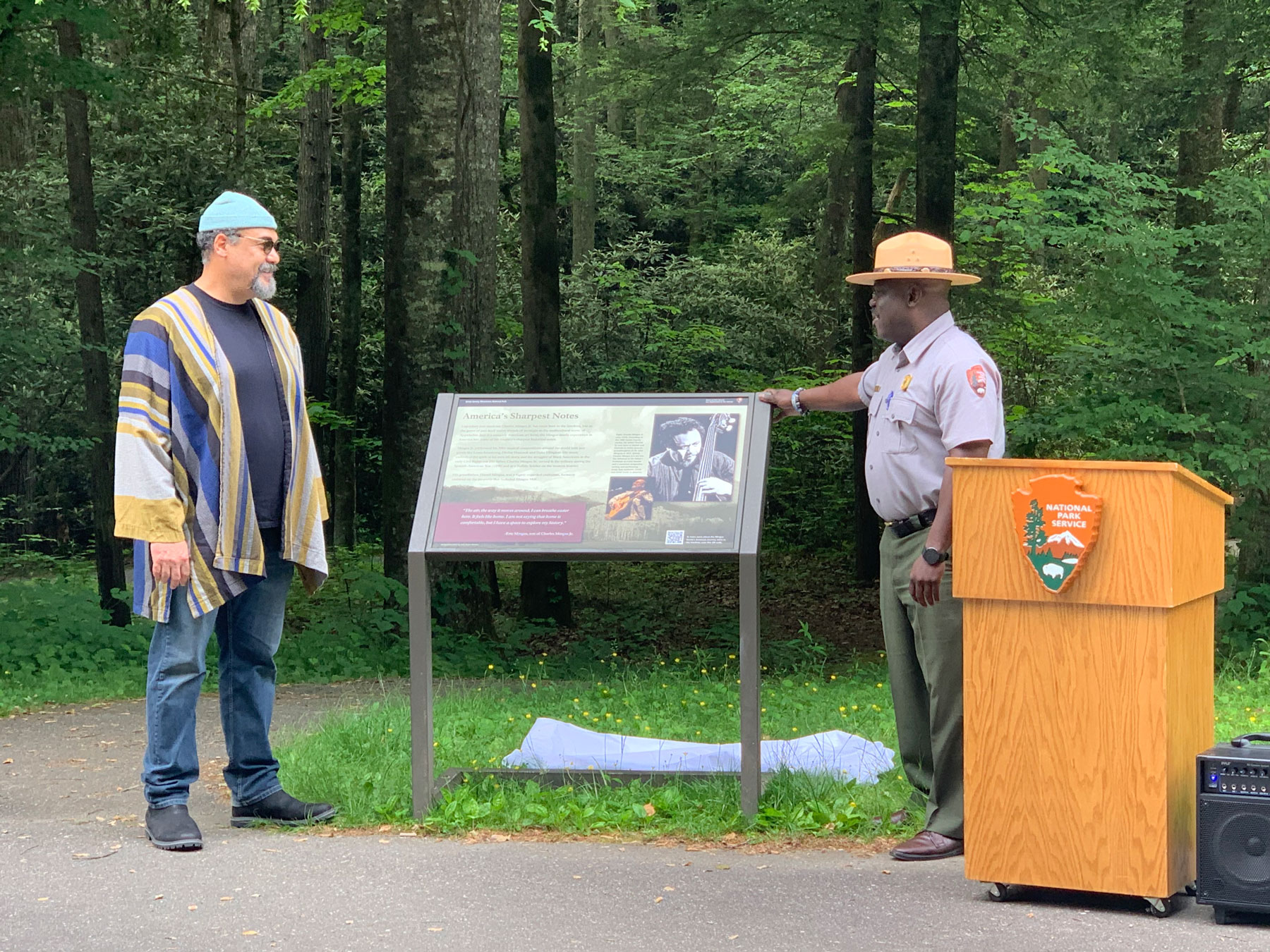
Eric Mingus is intimately familiar with his father’s story. For better or worse, it’s a story that has followed him throughout his life and shaped his own path as a performing artist.
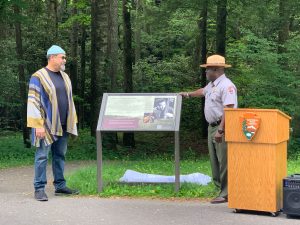
The story goes something like this: Born in 1922, Charles Mingus Jr. came of age in Los Angeles, California, where he received training in classical cello and showed early promise as a composer. After pivoting to the upright bass, he embraced the improvisational language of jazz, which carried him through a decades-long career as a revered bandleader and defining figure of American music until his death in 1979.
As for the other Charles Mingus—Charles Mingus Sr., Eric’s grandfather—that story is still coming to light. It’s also one that Eric has become deeply invested in uncovering after he recently retraced his grandfather’s steps back to his childhood home just a few miles north of Cherokee, North Carolina, in what is now Great Smoky Mountains National Park. What Eric has learned from the experience has expanded his understanding of his grandfather, his father, and perhaps now most importantly, himself.
“I’d always heard about Mingus Mill and this area, but it wasn’t exactly a place we felt we had a piece of,” explained Eric. “Historically, this was the place my grandfather fled.”
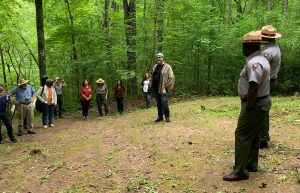
Although Eric had learned some broad strokes of his family connection to the Oconaluftee area as a child, park staff and volunteers working through the African American Experiences in the Smokies project have filled in key details about his grandfather’s early life. Launched in 2018, the project aims to support new research and share overlooked stories of African American life in and around the Great Smoky Mountains.
“For so long, we only knew one side of the story; we only knew the early White settler side,” said Antoine Fletcher, science communicator and lead of the African American Experiences in the Smokies project in the park. “That changed last year when we started to learn more.”
From its earliest years, the park has preserved the historic Mingus Mill in the Oconaluftee area of the park for the benefit of visitor education. The turbine-powered grist mill dates to 1886 and replaced an earlier mill built at the location around 1800 by some of the first White settlers in the area, which remains within the traditional lands of the Cherokee.
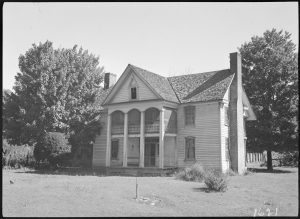
New information pieced together from census records, slave schedules, newspaper articles, correspondence, and oral histories have helped to illuminate the lives of enslaved African Americans brought to the area. These records have also offered some clues as to why a young Charles Mingus Sr. may have felt compelled to leave his home in the Smokies at around 14 years of age. Fate had placed him in a particularly precarious position as the child of a White woman named Clarinda Mingus and a Black man named Daniel Mingus—a man formerly enslaved by the White Mingus family. When Charles was six years old, Clarinda Mingus married a White man and moved away to start a new family, leaving him in the care of his White grandfather and great-grandparents.
“It’s a complicated history,” said Eric. “His mother loved him, but he couldn’t go with her to her next family. He couldn’t stay.”
His father, a skilled craftsman and woodworker, continued to live and work nearby but was not known to have had a relationship with his son. He too married and began a family. Some of Daniel’s descendants, including the West family of Cowee-West’s Mill in North Carolina, still live in the area.
In the end, Charles Mingus Sr.’s decision to leave would sweep him into American history and alter its very course. In the early 1890s, he traveled to nearby Knoxville, Tennessee, where he managed to enlist in the segregated US Army despite his young age. After serving an initial stint in the Spanish-American War, Charles re-enlisted and spent the remainder of his military career as a member of a Buffalo Soldier regiment stationed throughout the American West. He eventually settled in Los Angeles, where he remained until his death in 1951, more than a decade before his grandson Eric Mingus was born.
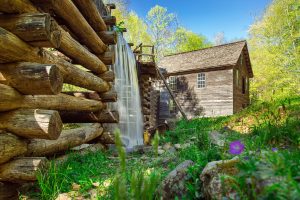
Just last week, the National Park Service hosted an unveiling ceremony for two new informational signs that share some of Eric’s remarkable family history near Mingus Mill. One sign interprets the history of the nearby Enloe Slave Cemetery, while another explores Eric and Charles Mingus Jr.’s family connection to the Smokies. Eric was invited to attend as a featured guest, returning to the land where his grandfather and great-grandparents once walked.
“It feels like home to me,” said Eric. “But I’m not saying home is comfortable. I am very aware of the fact that many of us came here when it was someone else’s home.”
As part of the event, Eric performed a musical piece inspired by a visit to the former Mingus estate. In the piece, Eric channels the perspective of those like his great-grandfather who lived and worked on the land as enslaved servants.
“They were more than just enslaved,” said Fletcher in his remarks at the ceremony. “They were the fabric of Appalachia. When they were here, they had families, they played games, and they had community here.”
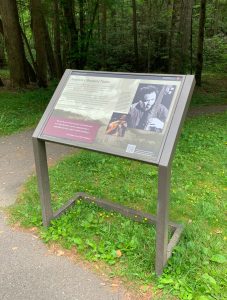
Although the interior of Mingus Mill is expected to remain temporarily closed to visitors for the next two months for preservation and rehabilitation work, park superintendent Cassius Cash is hopeful the new signs just outside the mill will deepen park visitors’ connections to the cultural history that continues to unfold in the Smokies.
“The new signs and the African American Experiences in the Smokies project are so important to tell the untold stories of African American people in the region,” said Cash. “This place is common ground for people from all different walks of life to share their experiences and their culture.”
As for Eric, understanding more about his grandfather’s complex childhood in the Smokies has allowed him to make peace with the contradictions and tensions that he has often felt himself as a man with a diverse racial background.
“Because of my makeup, who I am, I never could shy away from the conflict that I just presented walking in the room—even with my own family,” said Eric. “This has helped me to accept all the pieces that I am.”
An interview Fletcher conducted with Eric Mingus earlier this year will be shared soon on the park’s growing African American Experiences oral histories webpage. To learn more about the project and listen to other oral histories, find the project page at nps.gov/grsm under “Learn About the Park.”
Subscribe to get the latest posts sent to your email.
The Great Smokies Welcome Center is located on U.S. 321 in Townsend, TN, 2 miles from the west entrance to Great Smoky Mountains National Park. Visitors can get information about things to see and do in and around the national park and shop from a wide selection of books, gifts, and other Smokies merchandise. Daily, weekly, and annual parking tags for the national park are also available.